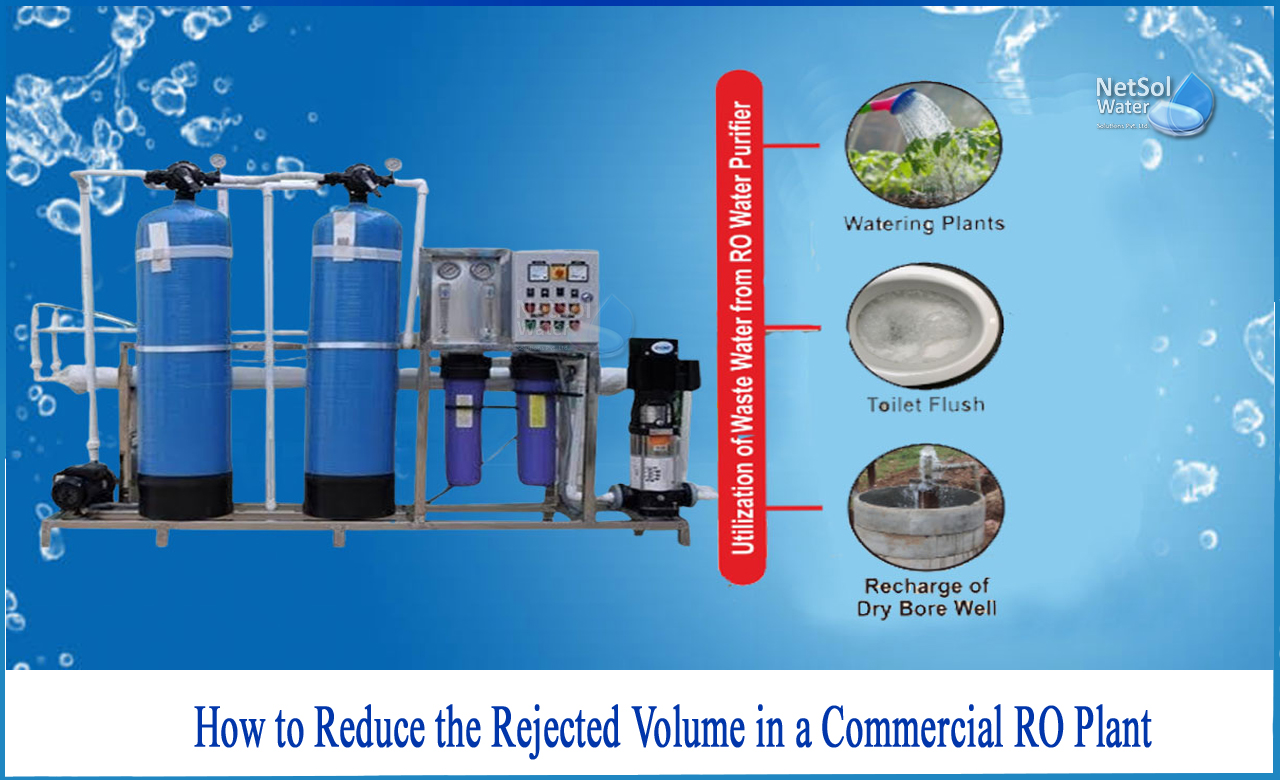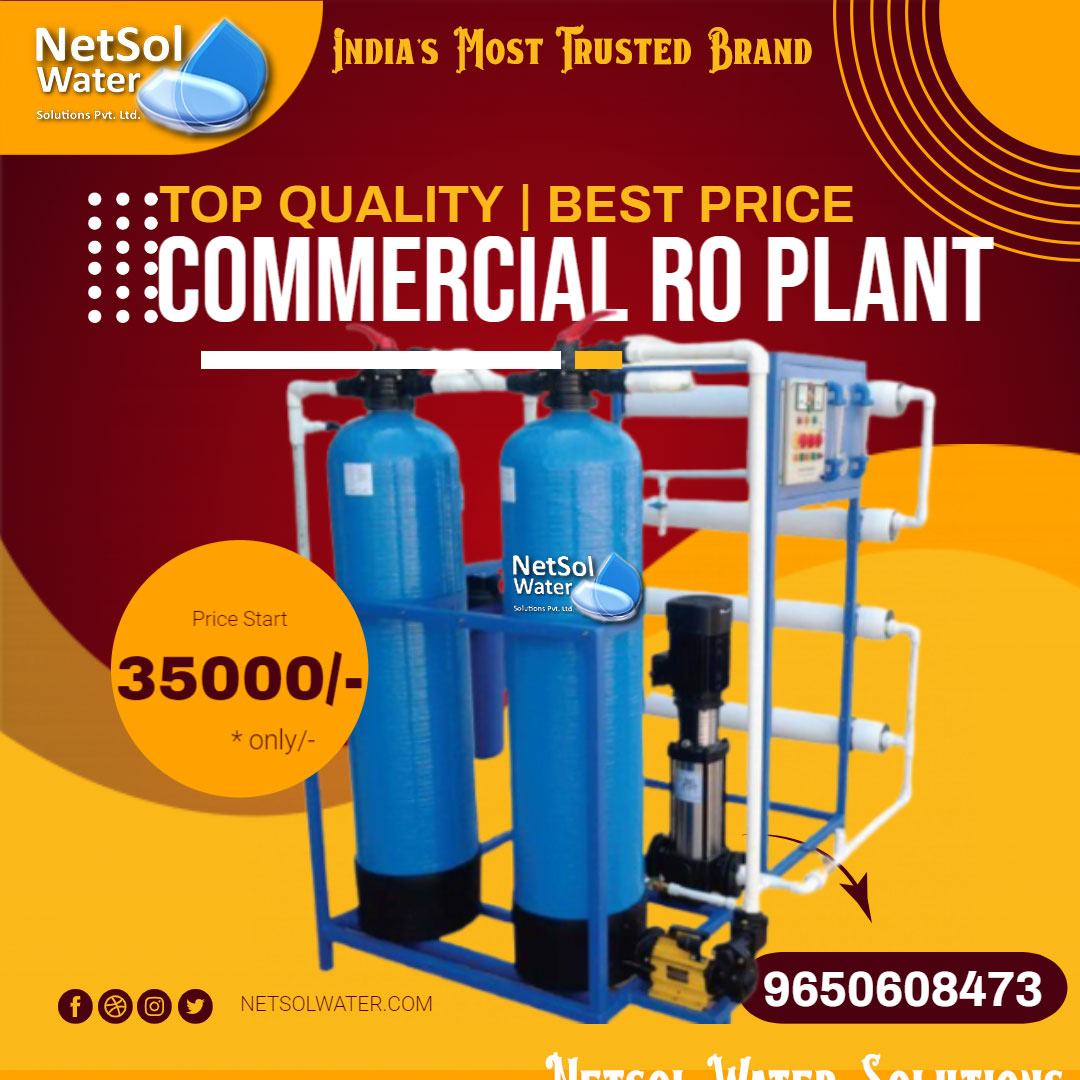Overview
For years, numerous businesses have employed reverse osmosis (RO) water treatment technology to extract dissolved particles from water by pushing the water through a semi-permeable membrane. Purification of drinking water and desalination of seawater to produce potable water are both typical uses for RO reject water disposal.
What is the RO Reject?
Water and other molecules of lower molecular weight pass through the membrane's micropores, resulting in a filtered water stream known as the permeate. Larger molecules, as well as a part of the water that does not flow through the membrane, are trapped by the membrane. The concentration, also known as the RO reject, is a concentrated stream.
Since we cannot help with the reduction of reject water from RO, but we can always make a better use of it. Like when we say a “Penney saved is a Penneyearned”, we can make a good use of reject water and save water.
How to reduce the Rejected volume in a Commercial RO Plant?
While RO is a good way to handle wastewater, what to do with the concentrate or reject water (which can account for up to 20% of the RO feed water volume) might be a problem.
The high salinity of RO reject/RO concentrate, in particular, can make disposal to a local sewage infrastructure impossible. The cost of transporting wastewater to a treatment plant might sometimes be prohibitive.
For commercial RO reject, there are few possibilities:
1: 2-STAGE RO
One possibility is to reuse the water that a first-stage RO system rejects and put it into a second-stage RO system. The high salinity and Total Dissolved Solids (TDS) of the first stage RO reject/RO concentrate, however, necessitates further treatment to avoid excessive scaling in the secondary RO membrane.
Even if the TDS content in the initial RO reject may be above 45,000 mg/l, with the correct membrane filtering (MF) system between the RO-RO sequences, the recovery rate may be extended beyond 95 percent. Rather than investing in a completely new desalination system, it may be more cost-effective to retrofit a second RO stage with pre-filtration.
2: Filtration of membranes
The high TDS RO reject often contains a lot of dissolved ions, silica, organic compounds, and calcium and magnesium salts that cause hardness. Before the reject stream is membrane filtered, it's critical to get the majority of them out of solution.
The membrane filtering phase of a two-stage RO system usually includes softener and flocculant, which causes particles to settle out of solution in a concentration vessel. Excess solids are transferred to a filter press for de-watering and disposal in a Zero Liquid Discharge (ZLD) system. The membrane filters remove any remaining particles, which are returned to the concentration tank, while the MF filtrate is sent to the second stage RO.
3: ED/EDR
The Electrodialysis (ED) and Electrodialysis Reversal (EDR) modules from Netsol Water Solutions can recover a high percentage of reverse osmosis (RO) reject water without membrane fouling or scaling.
Using electrodialysis in this function was originally too expensive, but the new technology, which is the result of a decade of research and development, has solved the problem. Electrodialysis modules of today's generation have a cross-flow fluid channel, high-performance membranes, and lower-cost control technologies. Modulating the DC power provided to the process also enables for process tuning to pick a desired amount of salt removal.
4: Tunability
Tunable is a term used to characterize today's modern ED (and EDR) systems. To put it another way, the quantity of electrical energy used may be adjusted based on the amount of salt that has to be removed from the supply water. When feed quality improves, the energy required decreases, resulting in energy savings. As a result, the process may self-adjust to changes in RO reject quality.
What can we offer?
If you are curious to know more about the RO reject and how to enhance the quality, then you are at the right place.
You can have an expert solution upon contacting Netsol Water, a leading manufacturer of Industrial and Commercial RO plants and wastewater treatment plants, among other services.




